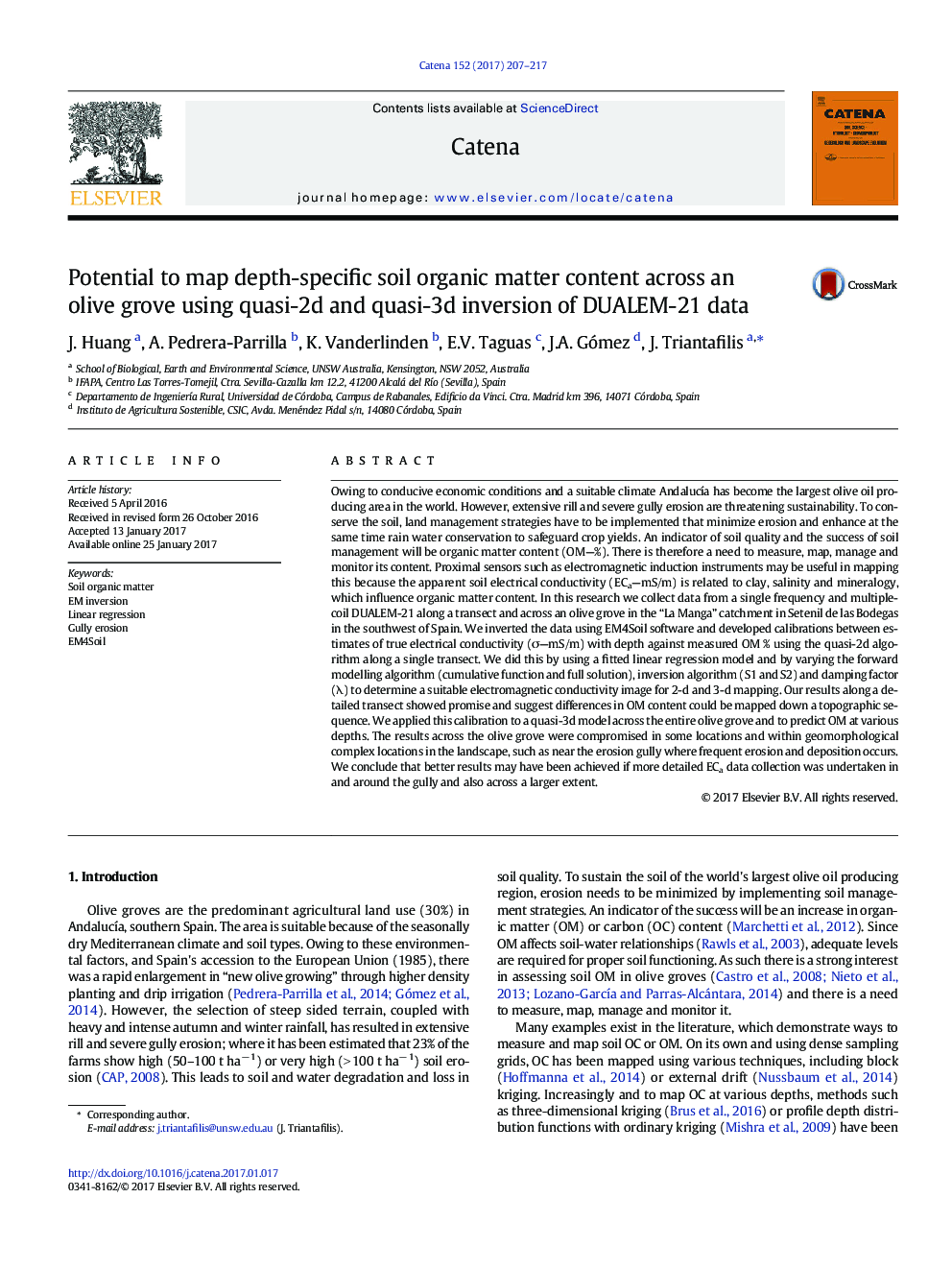| Article ID | Journal | Published Year | Pages | File Type |
|---|---|---|---|---|
| 5769961 | CATENA | 2017 | 11 Pages |
â¢Soil organic matter content was firstly mapped using EM induction data.â¢Quasi-2d and 3d EM inversions were combined to invert EM data.â¢A linear regression model was built between soil organic matter and inverted Ï.â¢Depth-specific soil organic matter was mapped in 2d and 3d across a hill-slope.â¢EM induction data may be used for soil organic matter mapping in the future.
Owing to conducive economic conditions and a suitable climate AndalucÃa has become the largest olive oil producing area in the world. However, extensive rill and severe gully erosion are threatening sustainability. To conserve the soil, land management strategies have to be implemented that minimize erosion and enhance at the same time rain water conservation to safeguard crop yields. An indicator of soil quality and the success of soil management will be organic matter content (OM-%). There is therefore a need to measure, map, manage and monitor its content. Proximal sensors such as electromagnetic induction instruments may be useful in mapping this because the apparent soil electrical conductivity (ECa-mS/m) is related to clay, salinity and mineralogy, which influence organic matter content. In this research we collect data from a single frequency and multiple-coil DUALEM-21 along a transect and across an olive grove in the “La Manga” catchment in Setenil de las Bodegas in the southwest of Spain. We inverted the data using EM4Soil software and developed calibrations between estimates of true electrical conductivity (Ï-mS/m) with depth against measured OM % using the quasi-2d algorithm along a single transect. We did this by using a fitted linear regression model and by varying the forward modelling algorithm (cumulative function and full solution), inversion algorithm (S1 and S2) and damping factor (λ) to determine a suitable electromagnetic conductivity image for 2-d and 3-d mapping. Our results along a detailed transect showed promise and suggest differences in OM content could be mapped down a topographic sequence. We applied this calibration to a quasi-3d model across the entire olive grove and to predict OM at various depths. The results across the olive grove were compromised in some locations and within geomorphological complex locations in the landscape, such as near the erosion gully where frequent erosion and deposition occurs. We conclude that better results may have been achieved if more detailed ECa data collection was undertaken in and around the gully and also across a larger extent.
